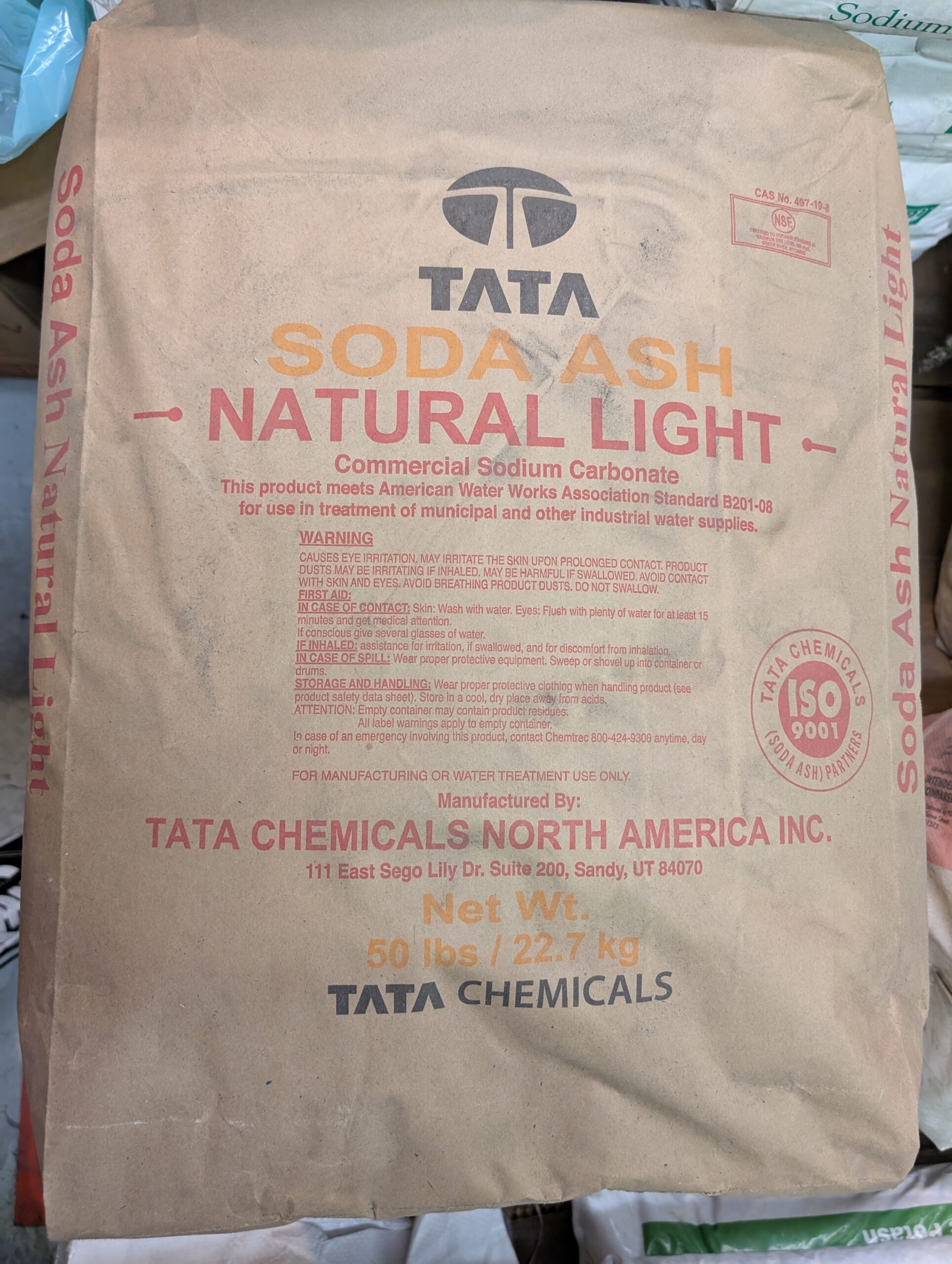Description
50 LB BAGS
Overview
Soda Ash, chemically known as Sodium Carbonate (Na₂CO₃), is a versatile white, granular, or powdered material. Due to its strong alkalinity and excellent chemical properties, it is widely used in industrial, commercial, and domestic applications. Depending on the intended application, Soda Ash is categorized into two main grades: dense soda ash and Light Soda ash.
Key Features
- Chemical Formula: Na₂CO₃
- Appearance: White, granular or powdered solid.
- Solubility: Highly soluble in water, forming an alkaline solution.
- Stability: Stable under normal conditions but hygroscopic, absorbing moisture from the air.
- Alkalinity: Strong base, useful for neutralizing acids and adjusting pH levels.
Applications
- Glass Manufacturing:
- A key raw material in glass production, contributing to the melting process and improving glass strength and clarity.
- Water Treatment:
- Neutralizes acidic water, softens hard water, and adjusts pH levels in municipal and industrial water systems.
- Detergents and Soaps:
- Enhances cleaning power by softening water and removing grease, oils, and stains.
- Chemical Production:
- It serves as a raw material for the manufacturing of sodium silicates, bicarbonates, and other compounds.
- Pulp and Paper Industry:
- Used in the chemical pulping process and for pH regulation in paper production.
- Textile and Dyeing:
- Utilized in textile processing and as a fixing agent in dyeing applications.
- Food Industry:
- Food-grade soda ash is used as a food additive (E500) for pH regulation and as a leavening agent in baked goods.
Advantages
- Eco-Friendly: Soda Ash is non-toxic and environmentally safe when used responsibly.
- Cost-Effective: Widely available and economical for industrial applications.
- Versatile: Suitable for diverse uses in multiple industries.
Safety and Handling
- Irritation Risk: May cause skin, eye, or respiratory irritation; handle with care.
- Protective Equipment: Wear gloves, goggles, and a dust mask during handling.
- Storage: Store in a cool, dry, and ventilated area to prevent caking due to moisture absorption.
- Spill Response: Clean spills with water or sweep up for proper disposal.




